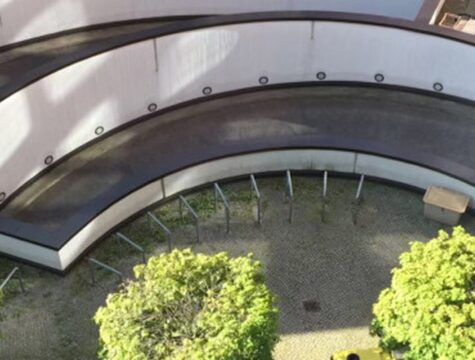A consortium of NGOs, science and business formulated a DIN SPEC on a zero waste vision for companies. During the one-year development process of the DIN SPEC, Laura Grotenrath represented Circular Berlin as a delegate of the coordinating body for standardization work of environmental associations (Koordinierungsstelle für Normierungsarbeit der Umweltverbände/ KNU)
The goal of DIN SPEC 91436 “Referenzmodell zum betrieblichen Abfall- und Wertstoffmanagement ausgerichtet an einer Vision “Zero Waste”” is to minimise non-recyclable waste and ensure optimal recycling and disposal of it, as well as to consistently align waste and recyclables management with the Zero Waste vision. DIN SPEC 91436 is aimed at private companies, public institutions, associations, foundations, etc. – in other words, at anyone who generates waste. For the user, a DIN SPEC is a free of charge and freely available standard, which can also serve as a basis for certification and form the preliminary stage to a standard.
The consortium that jointly developed the DIN SPEC consisted of representatives from PreZero, DEKRA, TÜV SÜD Management Service GmbH, Repaq/ Superseven GmbH, Resourcify and Circular Berlin. The DIN SPEC “Reference model for operational waste and recyclables management oriented towards a vision of “zero waste””can be downloaded here.
Want to learn more about the DIN SPEC? Keep reading.
Many are guided by the goal of a sustainable society and the goal of climate neutrality by 2050, for which a closed-loop circular economy is indispensable. At present, Germany is not making full use of the circular economy’s potential – neither ecologically nor economically.
Promising approaches to implementing the circular economy in industry address responsible use of our resources and high-quality disposal solutions. The circular economy takes a holistic approach to business: resources should be sourced as locally as possible and only used when they are really needed. Their value is preserved through appropriate measures as part of a continuous cycle within planetary load limits. The economy must be transformed in such a way that environmental protection, economic viability and social justice go hand in hand. This social transformation can only succeed if clear guidelines are issued. Waste must be avoided as far as possible to enable a resource-efficient circular economy.
Closed material cycles are not only worthwhile ecologically. According to a study by the Boston Consulting Group (BCG), the potential value added by a circular economy in Germany amounts to 140 to 200 billion euros a year by 2030 – provided that at least 50 to 70 percent of resources are reused in a circular manner (Source). Currently, only 14% of secondary materials and resources are returned to the economy. According to Maletz (2021), an average of 1,200 kg CO2 eq. is saved per ton of recyclate used.
To advance the circular economy, systematic waste management, meaning recyclables management is needed. A consortium of NGOs, science and business has joined forces in spring 2020 and developed a DIN SPEC that can now serve as a reference model for any organisation such as companies, associations, public authorities, educational institutions, etc. The DIN SPEC is based on the DIN SPEC standard.
The initiative goes back to PreZero, the environmental division of the Schwarz Group. The German Institute for Standardization (DIN) served as a neutral platform for the development of the document.”
The motivation
Zero Waste is both a pragmatic and visionary goal that aims to serve as a model for sustainable cycles for people and to continuously move closer to natural cycles. The Zero Waste vision, which is based on the Zero Waste principle, is a process that critically examines the status quo regarding the consumption habits and waste production of different actors in order to prevent waste in the first place, and use resources more effectively as recyclable material in order to close cycles.
In order to comply with the Ecodesign concept, products and processes are designed and managed in such a way that the volumes and hazardousness of waste and input flows (primary materials and energy) are avoided as much as possible and reduced. This can be achieved through consumption reduction, waste avoidance, repairs, reuse, composting, fermentation and recycling, as well as sustainable and careful use of resources. Transparent handling of resources and information is necessary for the successful implementation of cycles.
An important part of the Zero Waste vision is creating awareness. This must be done both internally, among all employees, and externally, among partners and customers, in order to create understanding for the changes that will take place and also to generate a multiplier effect.
By implementing the Zero Waste vision, all discharges into soil, rock, water or air that may have a detrimental effect on the health of humans, animals or plants are minimized in order to create a sustainable future for current and future generations.



